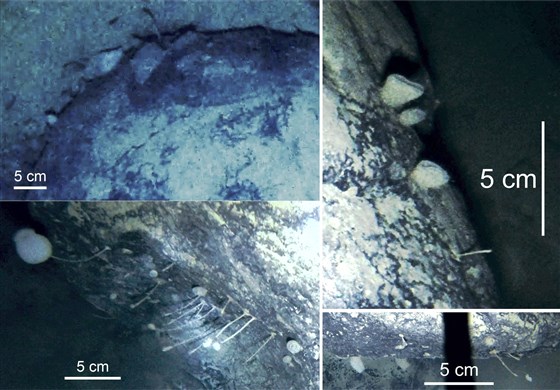Antarctica is the most unique environment on the Earth’s surface. Most surprisingly, due to the extremely low temperatures, not only the continents but also the nearby seas are covered with huge ice shelves.
Satellite imaging reveals that about 44 percent of the Antarctic coastline is frozen by an ice shelf. The 200-900m thick ice shelf is a pitch-black area, and scientists have been investigating whether living things exist in this extreme environment.

The Pilkner-Ronne Ice Shelf spreads over 430,000 square kilometers. Under this huge ice shelf, a large number of animals such as sponges inhabit the dark world, which is arousing surprise. ⒸNASA / Jim Yungel
Where photosynthetic is impossible Found a large number of animal objects
‘NBC’ reported on the 17th that a creature believed to be an animal was found under the Filchner-Ronne Ice Shelf, on the southern edge of the Weddell Sea in Antarctica.
The Pilkner-Ronne ice shelf, which was investigated, is about 430,000 square kilometers wide, the second largest after the Ross ice shelf. As such, it has raised the curiosity of scientists about whether the creatures under it live and what ecosystems are created.
In the study, geologists drilled a hole of ice about 914 m long on an ice shelf with a hot water drill and lowered a video camera under it.
Initially, the researchers expected the floor to be mud. However, I was greatly embarrassed when I hit the rock. What was even more surprising was the fact that there were’stationary’ colonies of animals living immobile on the rocky surface.
The team believes the colony is a sponze that is classified as an animal, or another type of sea creature that has evolved in a unique environment.

Two types of animals found on the rocky surface 800m below the ice shelf. Questions are being raised about how these sponge-like animals have lived in this dark place where photosynthesis is impossible and no food is found. Ⓒ British Antarctic Survey
Previously, a small number of small animals such as sea fleas and crustaceans were observed under the ice shelf, but most of them were living creatures, and this is the first time that such a large number of individuals have been found to live collectively in a large area.
This tells us that, although we do not know from when, a unique ecosystem has been established like other ocean ecosystems with an open sea level. What surprises scientists in particular is how this sponge-like animal was able to survive.
In order for these sponge-like animals to survive, they must eat other small floating organisms such as phytoplankton, but this cannot happen because photosynthesis is impossible in an extreme environment where there is no sunlight at all.
“Scientists still have a lot to learn,” said Dr. Huw Griffiths of British Antarctic Survey (BAS), the lead author of the paper. “I looked out.
The history of global climate change ‘Molecular clock‘
The rock that the research team discovered this time is about 241km away from the nearby sea off the ice shelf.
In addition, it is at least 1600 km away from the nearest place where living organisms such as phytoplankton live, and the prey is difficult to reach and the direction of the currents is different.
The study included the University of Cambridge in the UK and the British Antarctic Survey (BAS), the University of California in the United States, the National University of Australia, the University of Auckland in New Zealand and the National Institute of Water and Atmospheric Research, and the National University of Galway Island.
The paper was published in the journal’Frontiers in Marine Science’ on the 15th. The title is’Breaking All the Rules: The First Recorded Hard Substrate Sessile Benthic Community Far Beneath an Antarctic Ice Shelf’.
The results of this international joint research involving five countries contain very important biological significance as well as geology.
The biggest question is that animals have adapted in a unique way in a cryogenic and extreme environment that scientifically cannot live in, and have built an ecosystem that has never been seen before by fixing them in one place.
Officials believe that future studies should be conducted on how these animals flowed into the area and how they could settle down and obtain food in the harsh environment.
“The next step is to find out how similar the animals living here are to other sea animals,” said Professor John Priscu, a polar ecologist at Montana State University who has been studying life under polar ice for the past 40 years. I said.
Through related research, it is possible to determine whether sea creatures under the ice shelf have flowed from elsewhere or have evolved to live under the ice shelf from the beginning.
“If these organisms have evolved to live under the ice shelf from the beginning,” Spiscue explained, “then, through the Antarctic ice shelf, it could become a molecular clock that becomes an important factor in studying climate change on the past.”
(14519)
